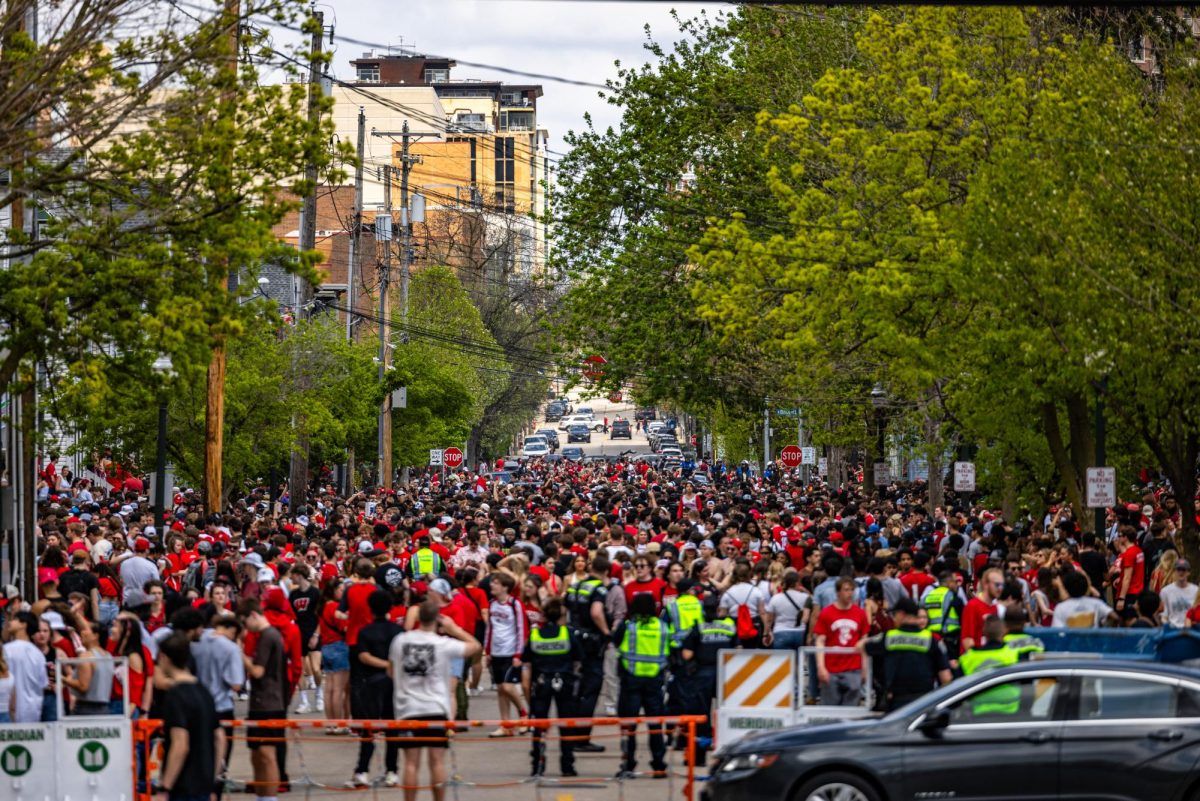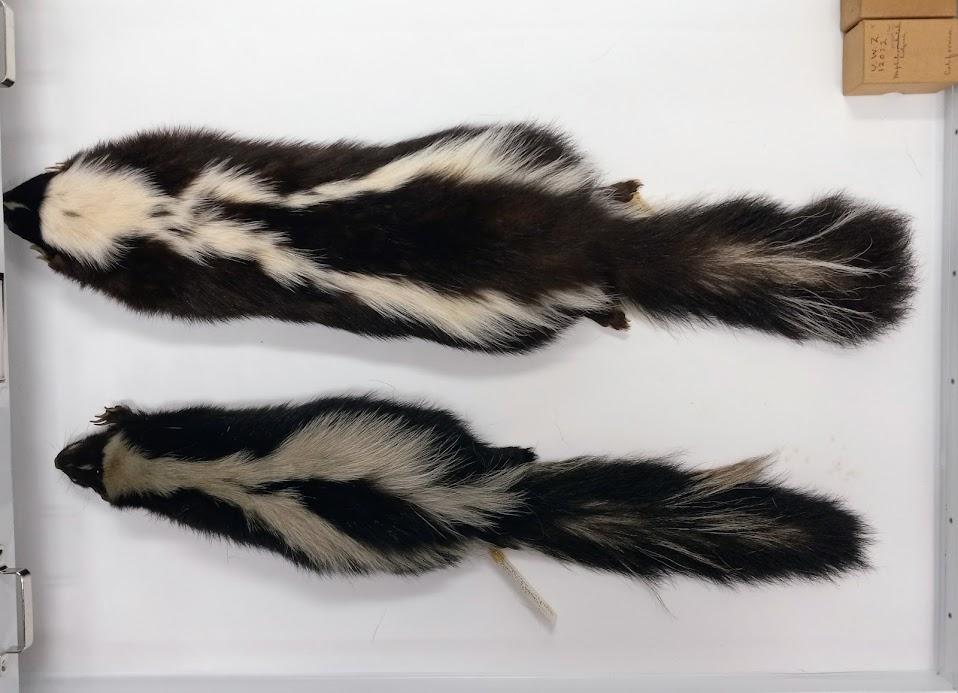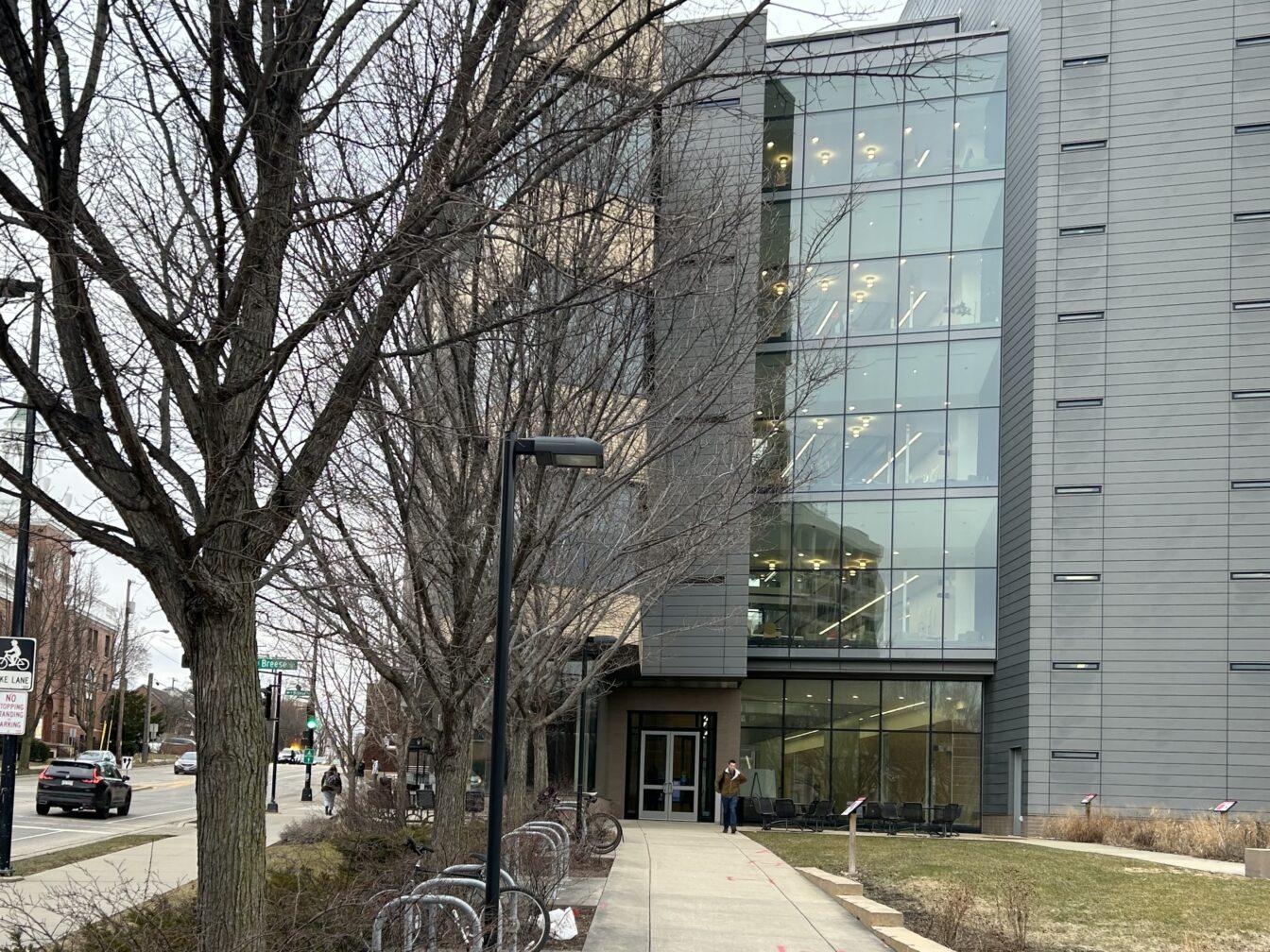On the fourth floor of Noland hall, a fully articulated chimpanzee skeleton and taxidermy wolf block the whiteboard in a discussion room. Cabinets line the walls, and inside researchers can find pinned bat specimens next to possum skins and the skulls of squirrel species native to Wisconsin. All these preserved animal specimens are part of the UW Zoological museum, which houses over half a million specimens to help researchers answer questions about animal morphology and ecology.
The museum, now housed in Noland Hall, was founded in 1848 — predating the university by almost a year. Originally referred to as a “Natural History Cabinet,” the museum started its animal specimen collection for use in teaching courses on campus.
Collections manager Emily Halverson said the original museum burned down with Science Hall in 1885, leading to a loss of all specimens that had been collected prior to that.
The museum’s curator, Edward Birge, personally purchased replacements from other museums. These specimens, such as a 150-year-old kangaroo skeleton, are still available to view at the museum today. The museum only has three full-time staff members to maintain the massive collection.
Halverson said that while the museum focuses on preserving species native to the Midwest, staff members preserve and store specimens from across the world at the museum.
From Sheldon to Shuri: Changing portrayals of scientists in media
“Professors on campus often donate to the museum,” Halverson said. “So we can trace some of our specimens directly to the research done here.”
One example she provided was the surprisingly extensive collection of fish native to Lake Tanganyika, Central Africa. Former UW professor Peter McIntyre studied how climate change has affected cichlids, a small fish species, and donated his research collection to the museum upon leaving UW.
Halverson said the collection is incredibly diverse, with specimens ranging from fish and mollusks to reptiles, amphibians, birds and mammals. Many specimens were donated to the museum after being salvaged by other government agencies. The Wisconsin DNR and local zoos are frequent contributors, providing deceased animals to the museum for preservation and research.
UW Elections Research Center offers insight into state, national elections
The largest collections housed at the museum are the osteology, or skeletal, collection and the fish collection. The fish provide a unique storage challenge, Halverson said. Because fish are often preserved in ethanol, the fluid needs to periodically be refilled in order to maintain the fish inside.
“We don’t know what questions scientists are going to ask,” she said. “We don’t know how they’re going to utilize our collection, so we aim to preserve as much information as possible.”
Dianna Krejsa, the museum’s curator of mammals and birds, said each museum has different specialties, and those focus areas determine how staff preserve specimens.
For example, Krejsa explained that many traditional museums preserve only the skin and skull of animals. The UW museum’s extensive collection of complete skeletons provides important information to researchers who want to answer questions about the complete anatomy of animals.
The variety of specimens is another strength of the museum, Krejsa said. The museum can provide researchers with a variety of samples from different regions or samples collected from a variety of time points, allowing them to achieve a larger sample size for their research.
“We need as much data as possible, first and foremost,” Krejsa said. “[My job is] to get specimens on the shelf and ready to be used for whatever research is needed.”
The process of getting specimens on the shelf is a long one, Krejsa said. First, staff members catalog information about when and where the animal was collected. Then, Krejsa uses key features of the specimen’s anatomy to identify its species and approximate age. She then cleans and prepares the specimen for storage. If flesh needs to be removed from the skeleton, the staff use a colony of live beetles which eat everything on the specimen but the bones. This allows staff members to more accurately measure the size and shape of the bones and is gentler than other cleaning methods.
IceCube Neutrino Observatory: In the right space at the right time
“Birge never would have imagined the things we’re doing with these specimens, and that’s why it’s so important to preserve as much as we physically can–we simply don’t know what will be important for future research,” Krejsa said.
Krejsa focused on the preservation of frozen tissue samples in graduate school, and said that while frozen tissues are a burgeoning field, it is quickly becoming a major request from researchers.
Krejsa said preservation methods have changed over the years, which means the museum has to keep careful records of every procedure done to the specimens. For example, many animal skins used to be treated with arsenic in the past, making older specimens unsafe to handle. The museum keeps records of these historical museum practices along with specimens.
“This museum isn’t just a time capsule into the past,” Halverson said. “Our collection holds the answers to questions that we haven’t asked yet.”
















